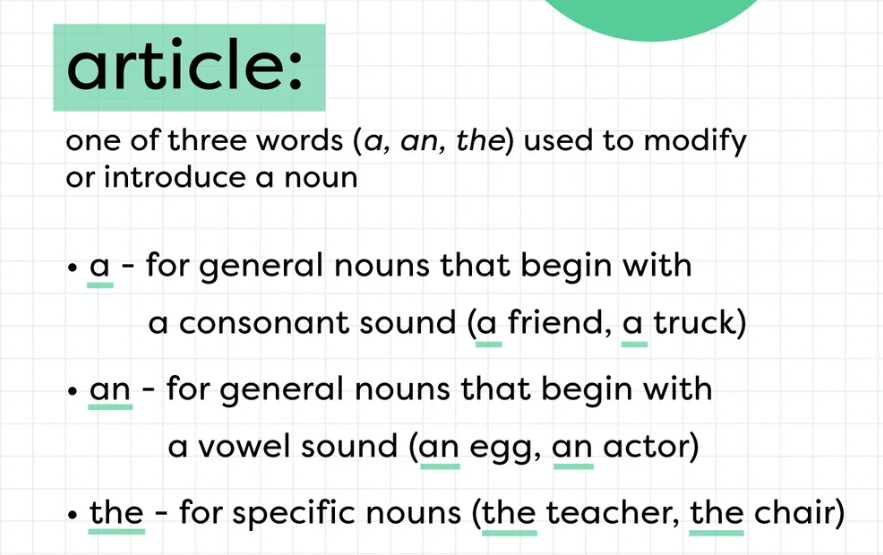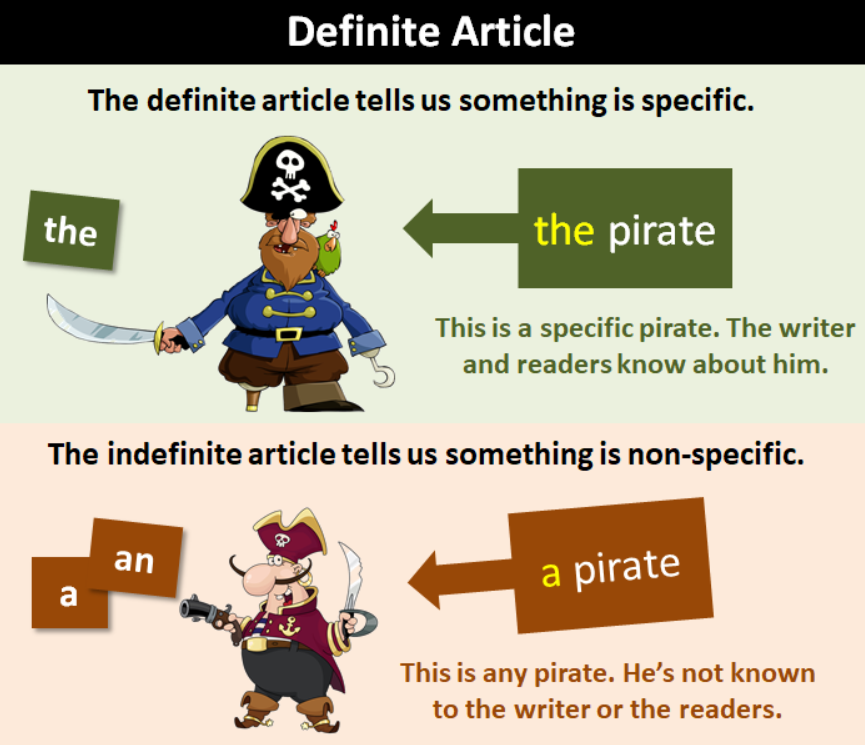Ever feel like your writing is missing something like it’s a freshly baked apple pie, but you forgot the sugar? You’re not alone. The secret ingredient that can make or break your sentences is often overlooked – articles in grammar.
The definite and indefinite articles – “the”, “a” and “an” – are tiny yet mighty tools that bring clarity to our words. They’re the spices of language, turning bland phrases into delicious statements.
If you’ve ever wondered how to use them correctly with countable nouns or uncountable nouns, if ‘Mount Everest’ needs an article, or why we say ‘the United Arab Emirates’, this post has got all the answers.
Dive in as we look into English articles in grammar and unravel these linguistic mysteries together.
By mastering articles, you’ll add flavor to every sentence making readers savor each word!
Table Of Contents:
- What is the Role of Articles in Grammar?
- The Definite Article “The”
- Indefinite Articles – A Dive into “A” and “An”
- Articles in The Context of General Nouns
- Exceptions in Article Usage
- FAQs in Relation to Articles in Grammar
- Conclusion
What is the Role of Articles in Grammar?
When it comes to English grammar, articles are like invisible connectors. They subtly tie your sentences together and provide essential context. The interesting fact about English is that we have two types of articles: definite articles and indefinite articles.
An article in grammar is a short monosyllabic word used before a noun (singular or plural) to specify grammatical definiteness – whether you’re talking about something specific or general.
Small words like ‘a’, ‘an’, and ‘the’ can have a big impact on the meaning of a sentence. But misuse them, and you might end up saying “I ate an apple pie” when you meant “I ate the apple pie.”
Notice how just one little word can completely change the meaning?
To illustrate this point further, let me give you another pair of examples:
“An elephant never forgets.”
“The elephant never forgets.”
In sentence one, we are talking about any random elephant; hence we’ve used an indefinite article (‘an’).
Whereas in sentence two, by using the definite article (‘the’), we’ve specified which elephant – perhaps one from our previous conversation.

Source: Your Dictionary
The Definite Article “The”
‘The’ is a small word with big responsibilities in English grammar.
Ever wonder why we say ‘the apple pie’ but not ‘a Mount Everest’? That’s because the definite article is all about specificity, it limits the meaning of a noun to one particular thing.
In general, we use ‘the’ when talking about something specific or known to both speaker and listener.
For example, saying ‘pass me the salt’ at the dinner table makes perfect sense as there’s usually just one salt shaker around.
We also apply this rule when referring to unique entities like geographical areas such as ‘The Middle East’ or singular nouns that have been previously mentioned.
So if I mention an interesting book once and want to refer back later, I’d say: “Let me tell you more about the book.”
‘The’ also works its magic with superlatives (‘She is the best’) and ordinal numbers (‘He was the first to arrive’).
When it’s not so straightforward, what happens? Let’s see how it plays out.
You would typically use ‘the’ before mountain ranges (e.g., The Rocky Mountains), bodies of water (e.g., The Great Lakes), and deserts (e.g., The Gobi Desert).
However, for individual mountains or lakes, no article is needed (e.g., Mount Fuji, Lake Tahoe).
The rule gets a little trickier with countries. Most stand-alone without ‘the’, but there are exceptions like ‘The United Arab Emirates,’ and ‘ The United States of America’.
Also, when dealing with plural countable nouns, we typically use ‘the’.

Source: Grammar Monster
Indefinite Articles – A Dive into “A” and “An”
‘A’ and ‘an’ signal that the noun modified is indefinite, referring to any member of a group. So if you’re talking about an apple pie but not one specific pie in mind, use an indefinite article.
The choice between using ‘a’ or ‘an’ depends on the vowel or consonant sounds at the start of the next word.
If your noun starts with a consonant sound like mountain ranges or Gobi desert, you’ll want to pair it with an ‘a’, like “A mountain range” or “A Gobi desert”.
On the other hand, if your noun begins with a vowel sound such as apple, then it should be written as “an apple”.
Note that we said vowel sounds not just vowels. This means some words starting with “u” can get paired up either way depending on pronunciation.
Words beginning with “h” should be pronounced as they are written, with the exception of words that have a silent “h” sound.
For words that begin with a pronounced “h” sound, use “a” such as “a hat”, “a hotel”, or “a hard ball.”
For words that begin with a silent “h” sound use “an” such as “an honest mistake.”
Special rules also apply to words that begin with a “u” sound.
Use “a” for words pronounced like “you” such as user, usual, or utilized.
Use “an” for words pronounced like “uh” such as unusual or utter.
This isn’t rocket science but understanding these simple rules will give you mastery over whether to use ‘a’ or ‘an’ before countable nouns.
So remember folks – make sure your sentence flows smoothly by choosing the right article form according to the initial letter’s pronunciation rather than its spelling.
Articles in The Context of General Nouns
We often use articles with general nouns. But how do you use them correctly? It’s all about understanding when to use a definite article, an indefinite one, or none at all.
The rule of thumb is that ‘the’ goes before both singular and plural general nouns if we’re referring to something specific.
Let me illustrate this: you would say “The apple pie was delicious” because you’re talking about a specific pie that everyone knows.
“A/an”, on the other hand, comes into play when we refer to any member of a group without specifying which one, so it could be any apple pie in existence.
An example would be: “I’d love an apple pie right now”.
In this case, I’m not picky – any ol’ slice will do.
To make sure you’ve got it down pat; remember this little trick. If your noun refers to anything unique such as ‘The North Pole’, ‘Mount Everest’, or even ‘The United Arab Emirates, go with “the”.
But if it’s a general noun, and you’re not being specific – like when talking about mountains in general, use an indefinite article.
Exceptions in Article Usage
In English language rules, we often see exceptions. This is no different with articles.
One common grammar pitfall is the omission of articles. Sometimes you’ll find yourself at the North Pole or Middle East without needing ‘the’ as your guide. Geographic areas don’t always require an article – they’re one type of exception.
Possessive pronouns also tend to walk alone. Adding an accompanying ‘a’, ‘an’, or ‘the’ creates redundancy rather than clarity. So remember: “his apple pie” is deliciously correct while “the his apple pie” leaves a sour taste grammatically.
Languages, nationalities, and academic subjects often go solo too. Think about it: we say “English” not “The English.”
Sometimes you’ll find situations where no articles are needed – especially with noncount nouns like ‘love’, ‘water’, or ‘music’. We don’t need an article here unless we’re discussing something very particular.
Some countable nouns can stand alone without an article – like general plural nouns.
So you’d say “Apples are tasty,” not “The apples are tasty,” unless you’re referring to specific apples.
Mistakes are part of the learning process but don’t worry if you slip up every now and then. The important thing is to keep practicing.
FAQs – Articles in Grammar
What are the 3 types of articles?
The English language has three articles: “the”, “a”, and “an”. ‘The’ is an English definite article, while ‘a’ and ‘an’ are indefinite articles.
What are the 10 examples of articles in a sentence?
The cat is sleeping.
A bird flew by.
An apple fell from the tree.
The sun rises in the east.
She’s an engineer.
I need a pen to write.
I saw an elephant at the zoo.
A man was walking his dog.
She bought the blue dress.
A good education is important.
What is an article and examples?
An article modifies a noun to indicate its definiteness or indefiniteness such as “The dog” (definite) versus “A dog” (indefinite).
Conclusion
Articles in grammar can seem tricky, but you’ve got this.
Remember: ‘the’ is definite — it points out specific items like Mount Everest or the United Arab Emirates.
“A” and “an” are indefinite, implying a more generic notion when referring to countable nouns.
There’s no article needed for some words – think abstract nouns or academic subjects.
A little practice goes a long way toward mastery of these tiny linguistic tools.
When in doubt, run a grammar tool like Grammarly to spot those little mistakes. Or better yet, sign up for an AI writing tool like RankWell to make sure you are using articles correctly.